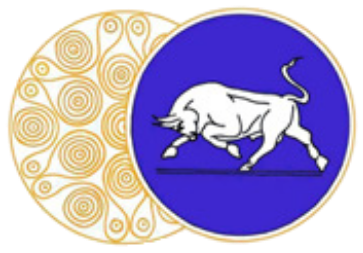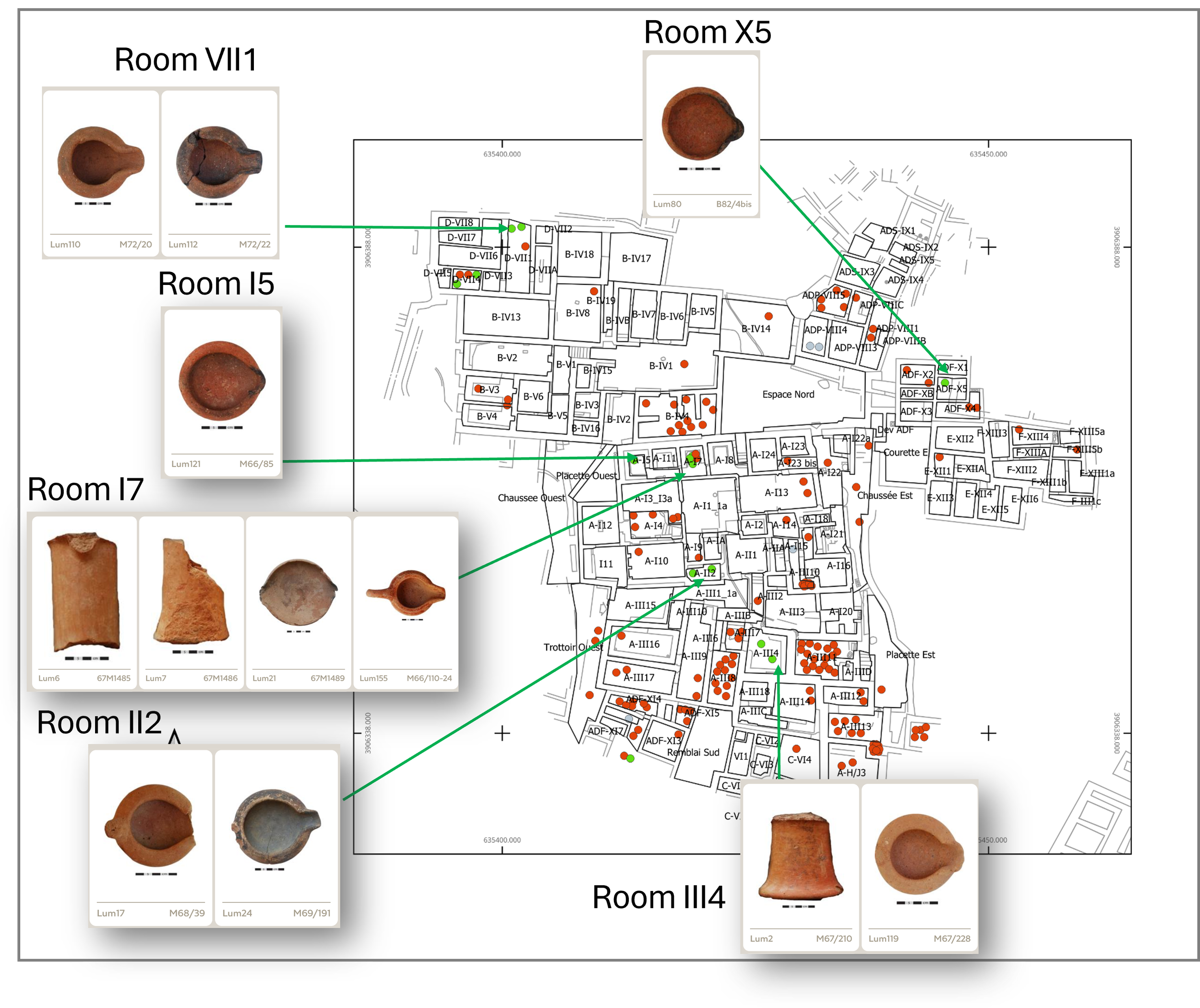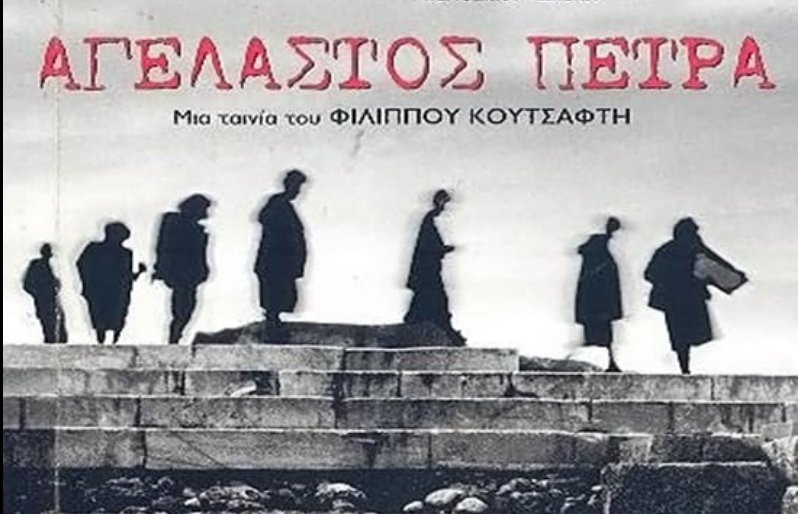IIHSA Events

Dr. Clare Tuffy, “Passing the Time at Ireland's Ancient Monuments”
You are invited to an online lecture on Thursday October 30th at 7.00 pm (Greek time)/ 5.00 pm (Irish time) / 12.00 (EST) by Dr Claire Cave, on “Passing the Time at Ireland's Ancient Monuments”.
Abstract: There are places in Ireland where you can travel back in time. At some wonderful prehistoric sites, you can share an experience with people who lived over 5000 years ago. You can stand in the same place as our ancient ancestors stood and wait for the same event to happen. If you are inside the burial chambers of Newgrange or Dowth on the shortest days of the year at winter solstice, you can see sunlight enter the dark tombs just as it was planned by those who built the monuments all those millennia ago. If you climb to the top of Carnbane East at Loughcrew to see equinox sunrise at Cairn T, you are repeating the journey of neolithic pilgrims. In this presentation, Clare Tuffy talks about her many years of being at Newgrange for sunrise and Dowth for sunset at winter solstice and Loughcrewat equinox time. She shares what it’s really like to be there and how visitors from all over the world react to these wonderful monuments.
Register here to attend:
https://us06web.zoom.us/meeting/register/SKEwP7eGS7yh9pqQ-x0VPw

The Multifacted aspects of ritual seminar series: Seminar 2. Giorgos Vavouranakis, Ritual as a Field of Discourse: the case of neopalatial Crete
Ritual activity is a key to understanding Crete during the Late Bronze Age, because it permeated many aspects of social life and was instrumental in the sanctioning of palatial authority during the Neopalatial period. It will be argued that the remains of cult and other types of ritual activity are still studied through a static framework. This, in its turn, encourages chimeric attempts to decipher the social meaning of cult and other types of ritual on Crete, and unquestionably promotes a restricted and top-down reconstruction of Neopalatial social organisation. By contrast, there is evidence to suggest a rather lively social interaction between palatial and non-palatial segments of Minoan society, also fostered by ritual events. It is proposed that Neopalatial ritual may fit John Barrett’s definition of a dynamic “field of discourse”. This concept emphasises the ability of ritual to operate as a live matrix, which afforded people to make sense of their social effectively. The question then becomes the sense of humanness that was ritual promoted and its importance not only for the social floruit of Crete during the Neopalatial period but also for the grave changes it underwent after the volcanic eruption on Thera
The seminar size will be limited to only 20 people in order to have a fruitful and educational discussion. In case you have any questions, please contact the Assist. Director: irishinstitutegr@gmail.com
The seminar is co-hosted with the School of Archaeology, University College Dublin

Joanne Murphy, The Irish Institute of Hellenic Studies at Athens: Who we are and what we do
You are invited to an IIHSA Online Lecture on October 13th, 2022 at 5.30 pm (Irish time) / 7.30 pm (Greek time) by Professor Joanne Murphy (Director, Irish Institute of Hellenic Studies at Athens).
The Irish Institute of Hellenic Studies at Athens is the only Irish cultural Institute in Greece. While many of our members are academic, either scholars or students, the Institute is open to and provides services for a wide audience who are interested in Greek culture, past and present. This lecture will provide an overview of the history, mission, and goals of the Institute. It will include a summary of the ongoing research by the members – both senior scholars and graduate students – and highlight some recently completed research. It will also provide a synopsis of our programmes last year that consisted of academic and outreach lectures and a study tour for students. We will also explain how you can become a member and support the Institute.
The lecture is co-hosted by the School of Archaeology, University College Dublin.
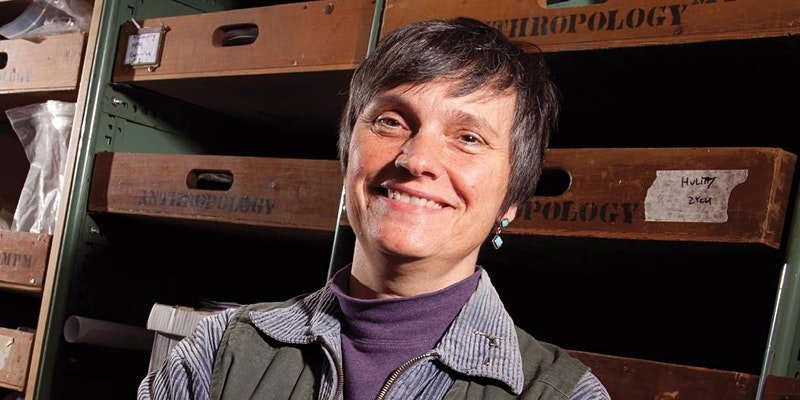
Bettina Arnold, "European Celtic Identity: Made in Greece?”
You are invited to an IIHSA Online Lecture on Thursday, April 28th 2022 at 5.30 pm (Irish time) / 7.30 pm (Greek time) by Professor Bettina Arnold (University of Wisconsin-Milwaukee).
Abstract: The starting point for my talk is a simple question: Without Hecataeus of Miletus, Herodotus and other early Greek writers would the designation Celtic have become the most frequently encountered ethnonym in the European Union? As an anthropologically trained archaeologist specializing in pre-Roman Iron Age Europe in southwest Germany I have frequently found myself wishing that Herodotus in particular had never existed or at least had confined his observations to first-hand sources of evidence. It is largely due to his geographically challenged assessment of the area surrounding the sources of the Danube River that the early Iron Age hillfort of the Heuneburg, where I have been engaged in fieldwork since 1988, has become seemingly inextricably associated with Herodotus’ Pyrene, for example. That putative identification has resulted in decades of Celtic-themed museum exhibits, documentaries and publications. The most recent manifestation of this phenomenon is the explicit designation, by political fiat, of “Keltenland Baden-Württemberg”: https://www.baden-wuerttemberg.de/de/service/presse/pressemitteilung/pid/auf-dem-weg-zum-keltenland-baden-wuerttemberg/. Professional archaeologists working in this region have long engaged in linguistic code-switching when presenting their research in academic vs. popular contexts (Hallstatt/Eisenzeit vs. Celtic, for example) but the distinction between these terms is becoming increasingly blurred. This presentation will explore the historical and archaeological roots as well as the contemporary political ramifications of playing fast and loose with early Greek sources when interpreting archaeological contexts.

Katerina Glaraki, The Early and Middle Bronze Age tholos tomb at Myrsini, Sitia (Crete)
You are invited to an IIHSA Online Lecture on Thursday, 31st March 2022 at 5.30 pm (Irish time) / 7.30 pm (Greek time) by Dr Katerina Glaraki, Hellenic Ministry of Culture and Sports.
At the beginning of the Early Bronze Age, a new funerary architectural type makes its appearance in Crete. This is the so-called Minoan tholos tomb, a circular built tomb, assumingly with a vaulted roof. These tombs are mostly found in south-central Crete (Mesara and Asterousia). The appearance and focused spatial distribution of this new type of tomb at south-central Crete has been interpreted on the basis either of the presence of ethnic and/or cultural groups or of the emergence of different local social and economic strategies.
In the summer of 1959, Professor Nikolaos Platon excavated the first Minoan tholos tomb in eastern Crete, near the modern village of Myrsini in the district of Siteia. At the time of its discovery and for many decades after that, the Myrsini tholos tomb was the only known monument of its type in this region. It is only during the last few years that two more tholos tombs have come to light in the same wider area around Myrsini, at the sites of Mesorrachi and Livari Skiadhi. All these three east Cretan tholoi were built at the beginning of the Early Minoan period (EM I), almost at the same time as their first counterparts in south-central Crete. However, while the Mesorrachi and Livari tholos tombs were used for a short period of time (within EM IA and EM IB–IIB respectively), Myrsini features a long-life and continuity of use from the EM I to the MM IIB/ IIIA period, i.e., for almost 1300 years, similarly to many tholos tombs in south-central Crete.
Hence, Myrsini constitutes a unique example of a tholos tomb as it is outside from and yet comparable to the tombs in the assumed “homeland” of this type of monument. For this reason, its examination promises to shed more light on the appearance of tholos tombs in eastern Crete, regarding not only the architectural form but also the funerary practices that took place at Myrsini in the Early and Middle Bronze Age. What are the social and/or cultural characteristics of the group that built and used the tomb? How is Myrsini part of the funerary and social context of Early and Middle Bronze Age eastern Crete? What was its relationship with the remote and yet tholos tomb core area of south- central Crete? These are some of the questions that the present study addresses.

Katerina Vrettou, “Transcultural contacts and the influence of the Cyclades on the material culture of Crete during the Bronze Age”
You are invited to an IIHSA Online Lecture on Thursday, 25th November at 6.00 pm (Irish time) / 8.00 pm (Greek time) by Katerina Vrettou (PhD candidate, Institute of Classical Archaeology, University of Heidelberg)
Movability and the regular contacts between different areas in the Aegean during the long period of the Bronze Age, resulted to the Aegean becoming a region where many elements where about to interrelate and shape different cultural traits. The regular andclose contacts between Cyclades and Crete played a crucial role in these developing processes and contributed to the creation of an amalgam of cultural features in Crete where the influence of the Cyclades is observable. This paper constitutes an analyticapproach of the character of the transcultural entanglements that were created between Cyclades and Crete during the Bronze Age. The most crucial question that arises is how the Cycladic ‘foreign’ objects in Crete were perceived by the local population and further how they became adopted, in some cases adapted and in the end integrated in the local codes of communication and practice.
Please register via Eventbrite where you will find a Zoom link to attend the lecture. You will also receive it in your email after your registration.
Email for any further information: irishinstitutegr@gmail.com
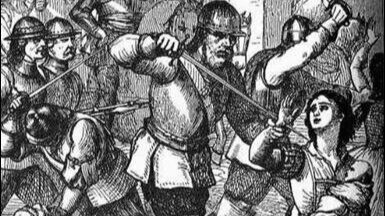
"The New Model Army under the command of Oliver Cromwell and the campaign in Ireland, 1649-1650"
You are invited to an IIHSA Online Lecture on Thursday, October 28th 2021: 5.30 pm (Irish time) / 7.30 pm (Greek time) by Panagiotis Georgakakis (Ph.D. Candidate, University of St. Andrews)
"The New Model Army under the command of Oliver Cromwell and the campaign in Ireland, 1649-1650."
Abstract: The Revolution of 1642 was crucial to the English history not only for its political character, but also for the presence of a passionate religious background, which managed to unite three social classes; those of the bourgeois, of nobles, and of working (lower) class. Puritanism became the glue among those classes which demanded not only the sign of a new “social contract” but also a share to the power. Puritanism’s importance became clearer with the creation of the New Model Army, an army which was victorious in the battlefield. Through the battles the name of Oliver Cromwell became well-known in the political life of the state; yet, his political power was not secured at all. The Irish campaign by Cromwell became a reference point to the history of this island since its results are still clear three centuries later. The purpose of the lecture is the investigation of the motives of this campaign as well as the crucial decisions Cromwell had to take against his rivals. Specifically, this lecture deals with the massacres in Drogheda and Wexford and how these massacres affected the Irish morale, comparing them with the peaceful surrender of the cities of Ross and Clonmel.
Please register via Eventbrite where you will find a Zoom link to attend the lecture. You will also receive it in your email after your registration.
Email for any further information: irishinstitutegr@gmail.com

Prof. Michael Hoff: ‘Antiochia ad Cragum in Rough Cilicia: Pirates, Romans, and More Pirates.’
You are invited to an IIHSA Online Lecture on Thursday, October 7th 2021: 5.30 pm (Irish time) / 7.30 pm (Greek time) by Prof. Michael Hoff (University of Nebraska-Lincoln School of Art, Art History and Design) on ‘Antiochia ad Cragum in Rough Cilicia: Pirates, Romans, and More Pirates’.
Abstract: Antiochia ad Cragum, located on the south Turkish coast in the region of western Rough Cilicia, was founded by Antiochus IV of Commagene during the Julio-Claudian period. The site had previously served as one of the bases for the infamous “Cilician Pirates,” but Antiochus’ eponymously-named city was certainly less famous. Nevertheless, excavations since 2005 have revealed much of the inner workings of the small city, especially regarding relationships between Emperor and city. This lecture highlights the site’s pirate past and noteworthy discoveries made since excavation began.”
Please register via Eventbrite where you will find a Zoom link to attend the lecture. You will also receive it in your email after your registration.
Email for any further information: irishinstitutegr@gmail.com

IIHSA Open Meeting and Annual lecture - Dr Alan Peatfield, “The Petsofas Peak Sanctuary: A Prelude”
The Director of the Irish Institute of Hellenic Studies at Athens invites you to attend the Annual Open Meeting of the Institute with an introduction on the work of the Institute 2020, and a lecture by Dr Alan Peatfield (University College Dublin), “The Petsofas Peak Sanctuary: A Prelude” Thursday, 29th April 2021 5pm (Ireland) / 7pm (Greece)
Abstract
The peak sanctuary of Petsofas in East Crete was the first Minoan peak sanctuary to be investigated, in 1903 by John Myres. Rightly or wrongly, Petsofas became the definitive site by which all other peak sanctuaries are compared or contrasted. As a consequence, Petsofas seems to be the peak sanctuary about which we know most. We are discovering however, that this familiar site is unexpectedly enigmatic.
In 1971 and 1976, Costis Davaras himself excavated Petsofas as part of a programme of explorations of the peak sanctuaries in East Crete. The material from all of Davaras's excavations is now the heart of the East Cretan Peak Sanctuaries Project wherein Christine Morris and I are committed to bring all this material to publication. As we complete the writing of Prinias, we have turned to Petsofas. In the past two years we have gathered and organised the material in preparation for a major study. Even with this preliminary work we have realised that Petsofas is a richer and more complex site than previously realised. It is this glimpsed complexity that we propose to share with you in this lecture.
Please register via Eventbrite below and you will receive the Zoom link to attend the lecture nearer the time
Email for any further information: irishinstitutegr@gmail.com

Day School 2021 - Seascapes: Island and Coastal Life in the Aegean and Beyond from Prehistory to the Recent Past
Irish Insitute of Hellenic Studies Athens: Day School 2021
Seascapes: Island and Coastal Life in the Aegean and Beyond from Prehistory to the Recent Past
April 21-22, 2021 @ 16.00
The ancient Greek world was defined to one extent or another by the seas which surrounded it. Jutting out into the Mediterranean, the expansive coastlines of the Greek peninsula and neighbouring islands made it inevitable that the sea would shape the lives of the peoples it surrounded. From the pioneering colonisation of new lands in the ages of stone through to the participation in vast empires of the Hellenistic and Roman world, the sea not only connected people but shaped their view of the world around them. The good surely came with the bad – while resources could be accessed through expansive trade networks bringing prosperity, they could be taken away by force through piratic raids. Yet even more routinely, the sea shaped leisure, diet and the very nature of communities. The Aegean Sea connected and divided, sustained and challenged, lay beyond places for living but was at the centre of life. In these short papers, we present case studies and theoretical reflections on how island and coastal life was a defining characteristic of Greece from prehistory to more recent times.
Programme
Wednesday, April 21
16:00 - Welcome
16:10 - Joanne Murphy (UNC Greensboro) Joining the Dots: The Kea Archaeological Research Survey.
16:30 - Will Megarry (Queens University Belfast) Insular thinking: A global look at identity, material culture and choice amongst island societies.
16:50 - Marina Milic (University College Dublin) The early history of island hopping: The growth of Aegean’s coastal communities in the 7th millennium BC.
17:10 - Questions
Thursday, April 22
16:00 - Martine Cuypers (Trinity College Dublin) Looking around: Mapping coastal space in Greek ‘circumnavigations’.
16:20 - Barry Molloy (University College Dublin) The ups and downs of living on the Big Island: Maritime perspectives on crises in Crete during the Bronze Age.
16:50 - Christina Haywood (University College Dublin) Is there something special about islands? Some lessons to be learned from the Ionian Sea in the Bronze Age.
17:00 - Questions
For further details about the Day School 2021 event and IIHSA membership, contact barry.molloy@ucd.ie

Dr Eric Haywood, “St Patrick to the Rescue! Travelling from Constantinople to Ireland in the 15th Century”
Thursday 18th March at 5pm (Irish time)/ 7pm (Greek time)

Dr Ellen Finn, "Losing liminality: Turner’s theory of transition in the funerary archaeology of Prepalatial Crete"
Thursday 11th February at 5pm (Irish time)/ 7pm (Greek time)

